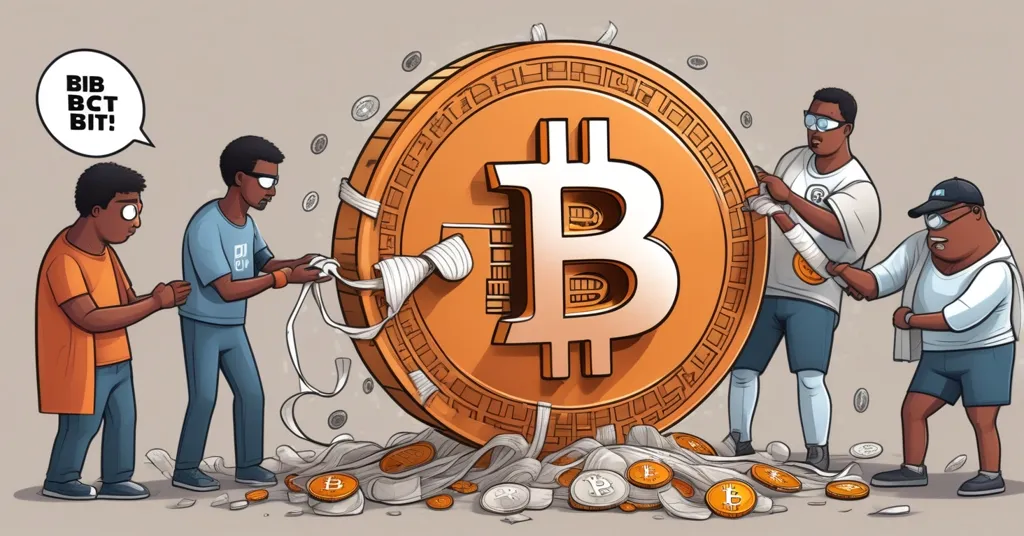15 Years Ago: Bitcoin’s 184B BTC Bug and Community’s Swift Response

15 Years Since Bitcoin’s Infamous Bug That Created 184 Billion BTC
On August 15, 2010, a bug in Bitcoin’s block 74638 led to the creation of over 184 billion BTC, threatening the cryptocurrency’s foundational principle of scarcity. The “value overflow incident,” as it’s known, serves as a stark reminder of the critical role the community plays in maintaining the integrity of decentralized systems.
- Bug in block 74638 created 184 billion BTC
- Resolved within hours by Satoshi Nakamoto and early developers
- Bitcoin’s scarcity upheld by community vigilance
- Lessons relevant amidst current crypto developments
Imagine waking up to find your Bitcoin wallet suddenly holding more BTC than Elon Musk’s net worth. That’s what happened on August 15, 2010, when a bug in Bitcoin’s block 74638, a specific set of transactions recorded on the blockchain, generated over 184 billion BTC. This glitch, known as the “value overflow incident,” resulted in two wallets receiving a staggering 92.2 billion BTC each, exceeding the intended 21 million cap by a factor of 8,784. The anomaly, akin to a bank account that can only hold up to $21 million suddenly showing $184 billion due to a glitch, threatened the very foundation of Bitcoin’s scarcity.
The bug was quickly identified and addressed through a soft fork—a change to the software protocol where only previously valid blocks/transactions are made invalid—implemented by Satoshi Nakamoto and early developers like Gavin Andresen and Jeff Garzik. Within hours, the surplus BTC was erased, and the protocol’s integrity was restored. This rapid response underscores the importance of community vigilance and the ability to self-correct, which are crucial for the security and trust in decentralized systems.
Blockchain engineer Zak Cole, reflecting on the 15th anniversary of the incident, emphasized that Bitcoin’s scarcity is not just protected by code, but by a global network of users, developers, and validators. “Bitcoin’s scarcity is not protected by code. It’s protected by people,” Cole stated, highlighting the critical role of the community in maintaining the system’s trust and security.
The technical details of the bug involved an overflow in the transaction output value, which allowed the creation of an unprecedented amount of BTC. The soft fork that resolved the issue involved rejecting transactions with output value overflows, effectively nullifying the exploited bitcoins. This reorganization was unprecedented in scale, covering 53 blocks, and it took about 19 hours for the corrected chain to prevail.
The lessons from the value overflow incident are still relevant today as we see new projects like Burger King’s potential crypto launch and updates in SHIB and XRP. These developments underscore the ongoing importance of community oversight in maintaining trust and security within the evolving crypto space. The incident serves as a valuable case study for new entrants into the crypto space, illustrating the importance of code integrity and community vigilance.
Post-incident, Bitcoin’s market value saw a significant increase of over 300% by the end of 2010, from $0.07 to $0.30, showcasing the market’s confidence in the network’s ability to maintain its scarcity. This resilience and growth highlight how the human element remains vital for the security and trust of cryptocurrencies. As the industry evolves, the role of the global network of users, developers, and validators will continue to be critical in maintaining the integrity of decentralized systems.
Some critics argue that the swift resolution of the bug was a stroke of luck rather than a testament to the system’s robustness. However, Bitcoin maximalists point to this incident as evidence of Bitcoin’s resilience and the strength of its community. This aligns with the principles of effective accelerationism (e/acc), which emphasizes rapid adaptation and growth, exemplified by the Bitcoin community’s swift and effective response to the crisis.
The value overflow incident remains a pivotal moment in Bitcoin’s history, demonstrating the importance of community oversight in safeguarding the blockchain’s integrity. As we continue to witness developments in the crypto space, the lessons from Bitcoin’s early days serve as a reminder of the enduring importance of human vigilance and the collective responsibility of maintaining the trust and security of decentralized systems.
Key Questions and Takeaways
What was the “value overflow incident”?
The “value overflow incident” refers to a bug in Bitcoin’s block 74638 on August 15, 2010, which generated over 184 billion BTC, vastly exceeding the intended 21 million supply cap.
How was the bug resolved?
The bug was resolved by Satoshi Nakamoto and early developers through a soft fork, which was implemented within hours to erase the surplus BTC and restore the protocol’s integrity.
Why is community oversight important in blockchain ecosystems?
Community oversight is crucial because, as Zak Cole noted, Bitcoin’s scarcity is protected by people rather than just code. Vigilant users and developers are essential for identifying and correcting flaws that could undermine trust and security.
What does this historical event suggest about the future of cryptocurrencies?
This event suggests that the human element remains vital for the security and trust of cryptocurrencies. As the industry evolves, the role of the global network of users, developers, and validators will continue to be critical in maintaining the integrity of decentralized systems.
How do recent crypto developments relate to this historical incident?
Recent developments like Burger King’s potential crypto launch and updates on SHIB and XRP illustrate the ongoing relevance of community vigilance in maintaining trust and security within the evolving crypto space.
“Bitcoin’s scarcity is not protected by code. It’s protected by people.” – Zak Cole
“The anomaly, which could have destroyed trust in Bitcoin’s scarcity, was discovered and resolved within hours.”



